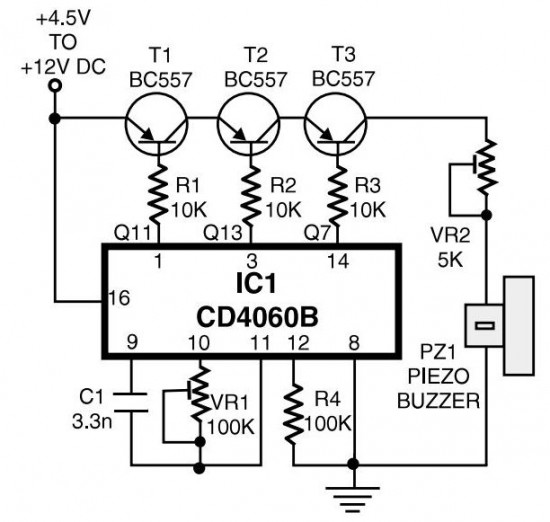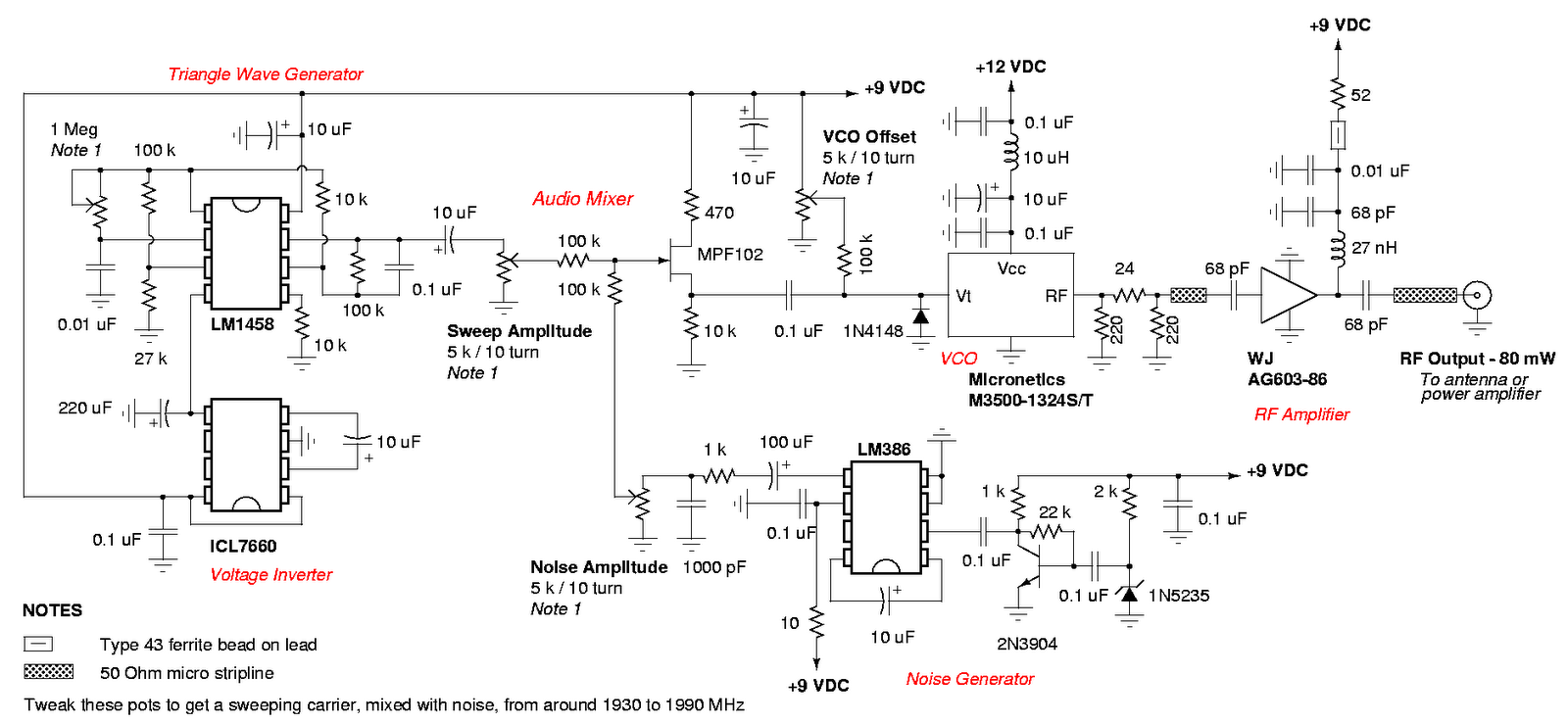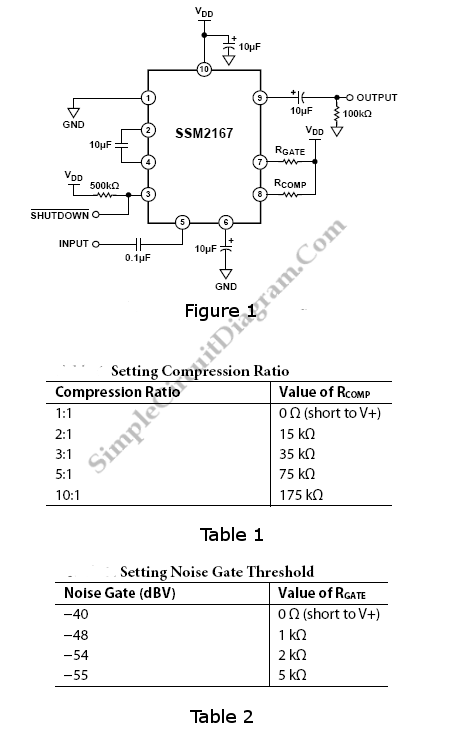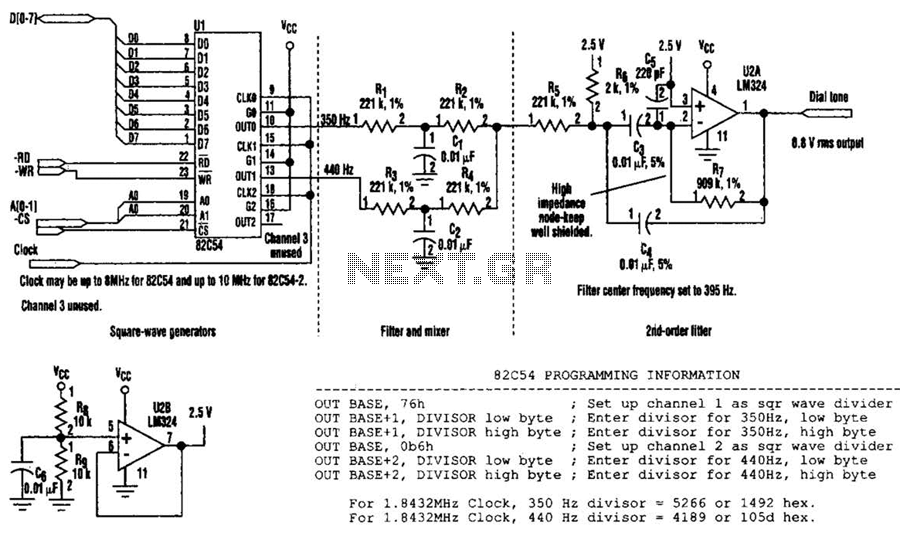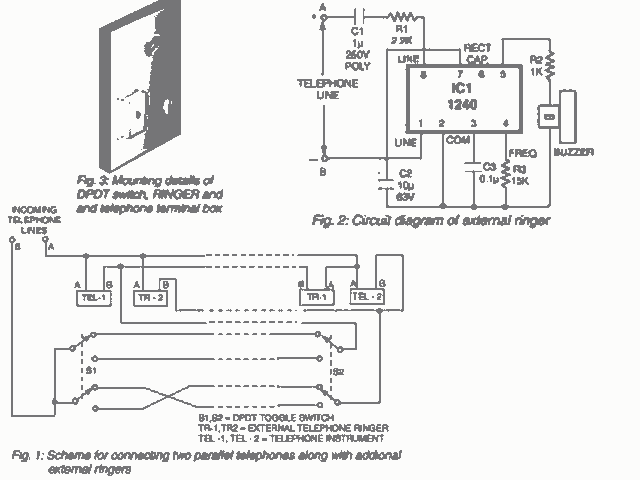
one of nine sequencer
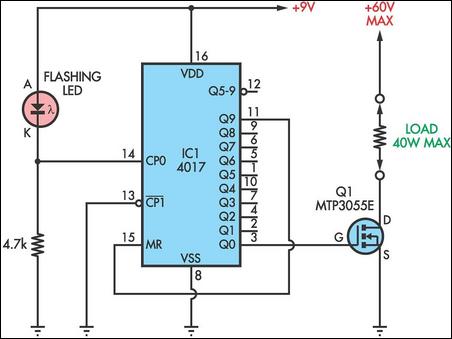
This innovative circuit utilizes a flashing LED as the clock input for a 4017 decade counter. Standard flashing LEDs (e.g., DSE catalog Z-4044) typically flash at approximately 2Hz, causing the outputs Q0-Q9 to cycle at that frequency. For instance, Q0 will activate for half a second, followed by Q1, Q2, and so on, up to Q8, before cycling back to Q0. A maximum of nine outputs can be utilized. To reduce the number of outputs, connect an earlier output to the MR (master reset) pin, pin 15. If the MR function is not employed, it should be connected to 0V.
The circuit operates by using the flashing LED to generate a clock signal for the 4017 decade counter. The LED's flashing frequency, about 2Hz, serves as the timing reference for the counter. Each output of the 4017 corresponds to a specific state in the counting sequence. When Q0 is activated, it indicates the first count; after half a second, Q1 is activated, representing the second count, and this continues sequentially through Q9.
The 4017 IC is designed to count up to ten states, where each output pin can be used to drive different loads, such as additional LEDs or other devices. The design allows for flexibility in the number of outputs utilized. By connecting an earlier output to the MR pin, the circuit can be configured to reset the counting sequence earlier than the default count of ten. This feature is particularly useful in applications where fewer outputs are needed.
In scenarios where the MR pin is not connected to any output, it is essential to tie it to 0V to prevent erratic behavior of the counter. This ensures that the counter operates continuously without unintended resets. The circuit can be powered by a standard DC power supply compatible with the 4017 IC specifications, typically ranging from 3V to 15V.
Overall, this circuit provides a simple yet effective means to demonstrate the functionality of a decade counter using a flashing LED as a clock source, showcasing both the versatility of the 4017 IC and the ease of integration with basic electronic components.This novel circuit uses a flashing LED as the clock input for a 4017 decade counter. Typical flashing LEDs (eg, DSE cat Z-4044) flash at about 2Hz so the outputs Q0-Q9 will cycle through at that rate. For example, Q0 will turn on for half a second, then Q1, then Q2 etc up to Q8 then it will start at Q0 again.
Up to nine outputs can be used. If you want fewer outputs, connect an earlier output to MR, pin 15. If MR is not used, connect it to 0V.. 🔗 External reference
The circuit operates by using the flashing LED to generate a clock signal for the 4017 decade counter. The LED's flashing frequency, about 2Hz, serves as the timing reference for the counter. Each output of the 4017 corresponds to a specific state in the counting sequence. When Q0 is activated, it indicates the first count; after half a second, Q1 is activated, representing the second count, and this continues sequentially through Q9.
The 4017 IC is designed to count up to ten states, where each output pin can be used to drive different loads, such as additional LEDs or other devices. The design allows for flexibility in the number of outputs utilized. By connecting an earlier output to the MR pin, the circuit can be configured to reset the counting sequence earlier than the default count of ten. This feature is particularly useful in applications where fewer outputs are needed.
In scenarios where the MR pin is not connected to any output, it is essential to tie it to 0V to prevent erratic behavior of the counter. This ensures that the counter operates continuously without unintended resets. The circuit can be powered by a standard DC power supply compatible with the 4017 IC specifications, typically ranging from 3V to 15V.
Overall, this circuit provides a simple yet effective means to demonstrate the functionality of a decade counter using a flashing LED as a clock source, showcasing both the versatility of the 4017 IC and the ease of integration with basic electronic components.This novel circuit uses a flashing LED as the clock input for a 4017 decade counter. Typical flashing LEDs (eg, DSE cat Z-4044) flash at about 2Hz so the outputs Q0-Q9 will cycle through at that rate. For example, Q0 will turn on for half a second, then Q1, then Q2 etc up to Q8 then it will start at Q0 again.
Up to nine outputs can be used. If you want fewer outputs, connect an earlier output to MR, pin 15. If MR is not used, connect it to 0V.. 🔗 External reference
